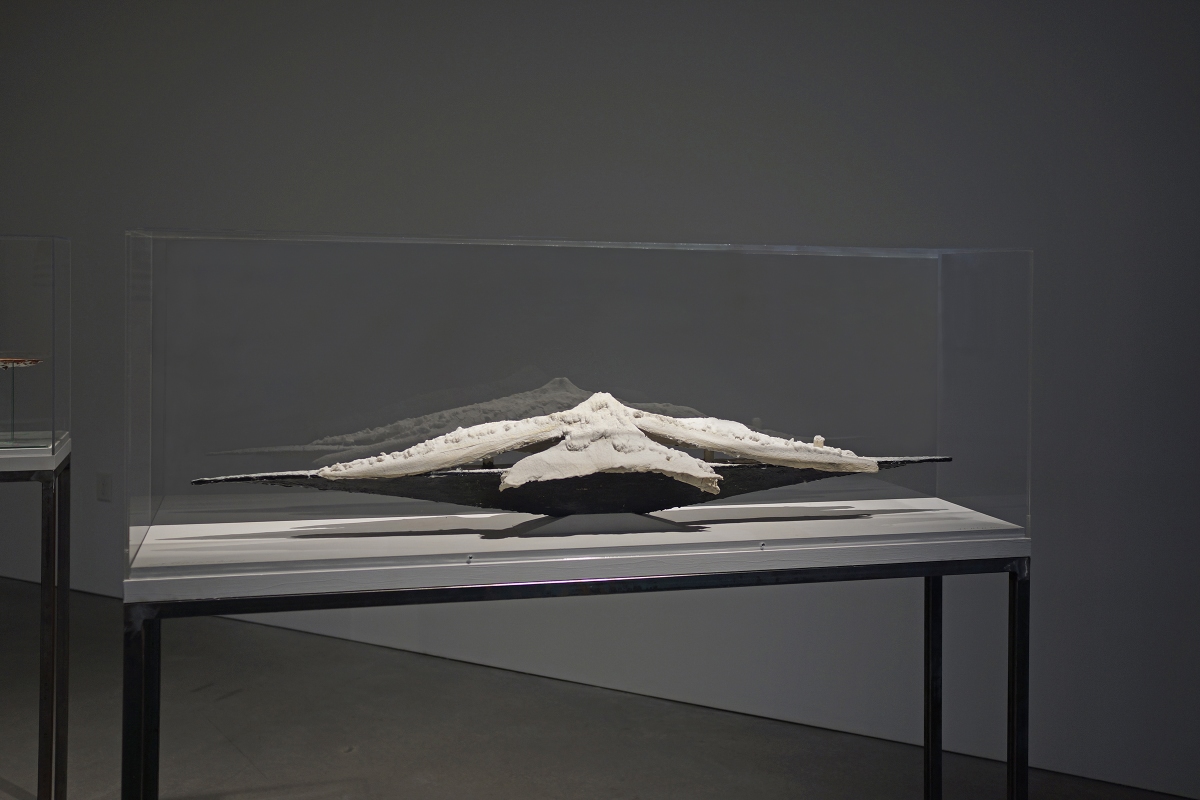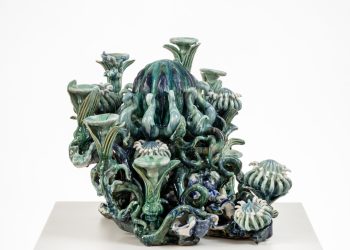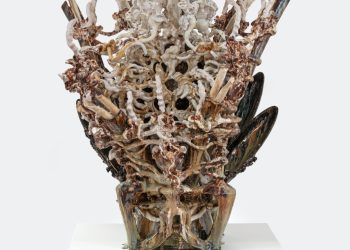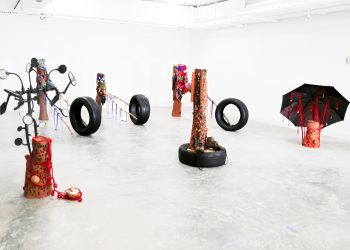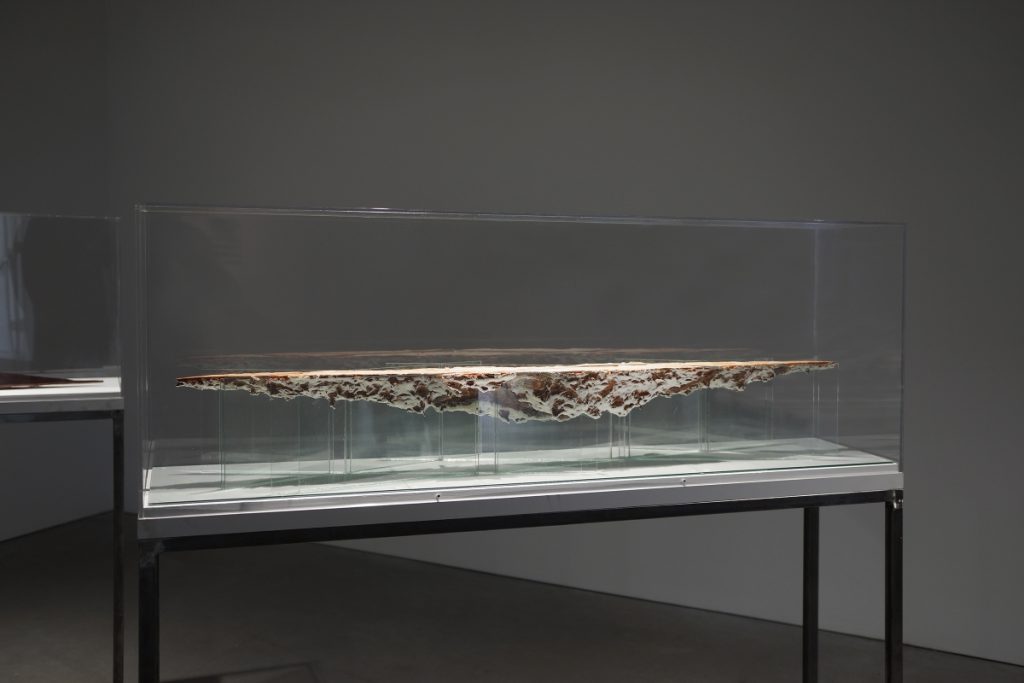
Land/Sea Ship (Silica Sea), 2019, ceramic, glass, silicone, fused silica, stains, vitrine, metal stand, 56 1/2 in 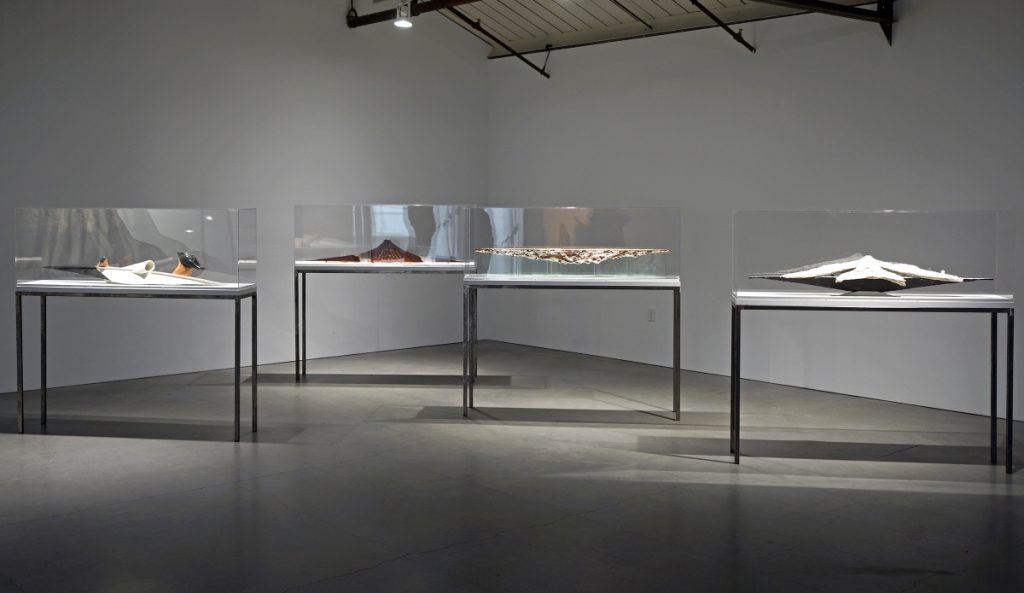
Land/Sea Ships (group view), 2019, ceramic, mixed media, vitrine, steel stand, 56 1/2 in. each. 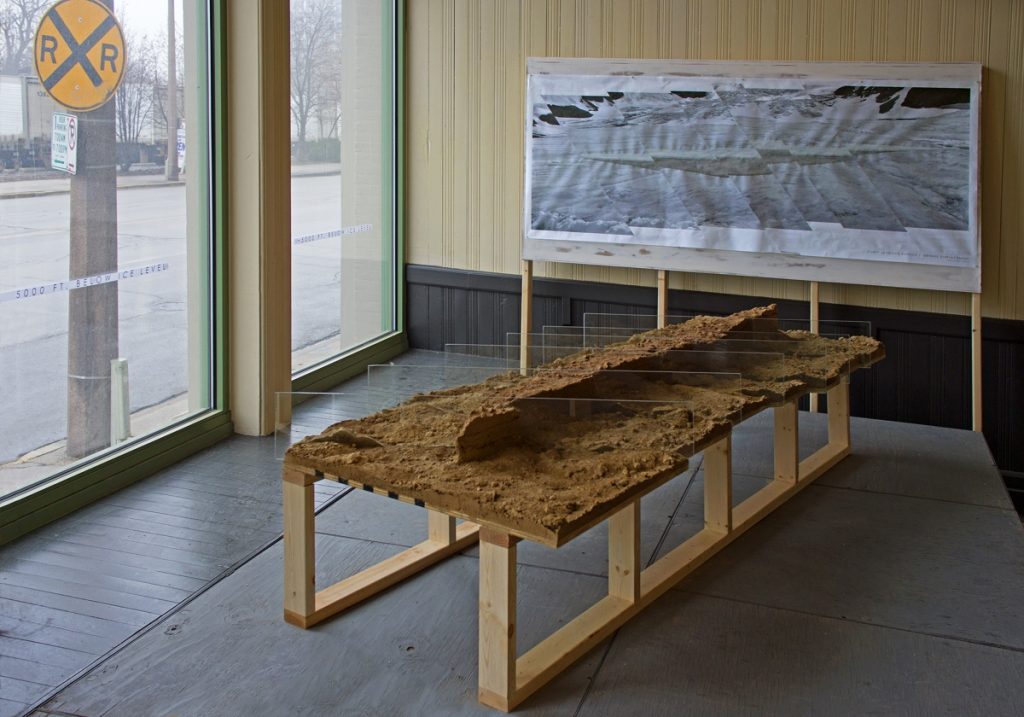
Study: Land/Sea Analog/Terrane Displacement, 2014, wall: pencil, acrylic and inkjet on vellum, wood, sheet rock, 95 in., floor: compressed S. E. Wisconsin glacial till, glass, wood, 108 in. 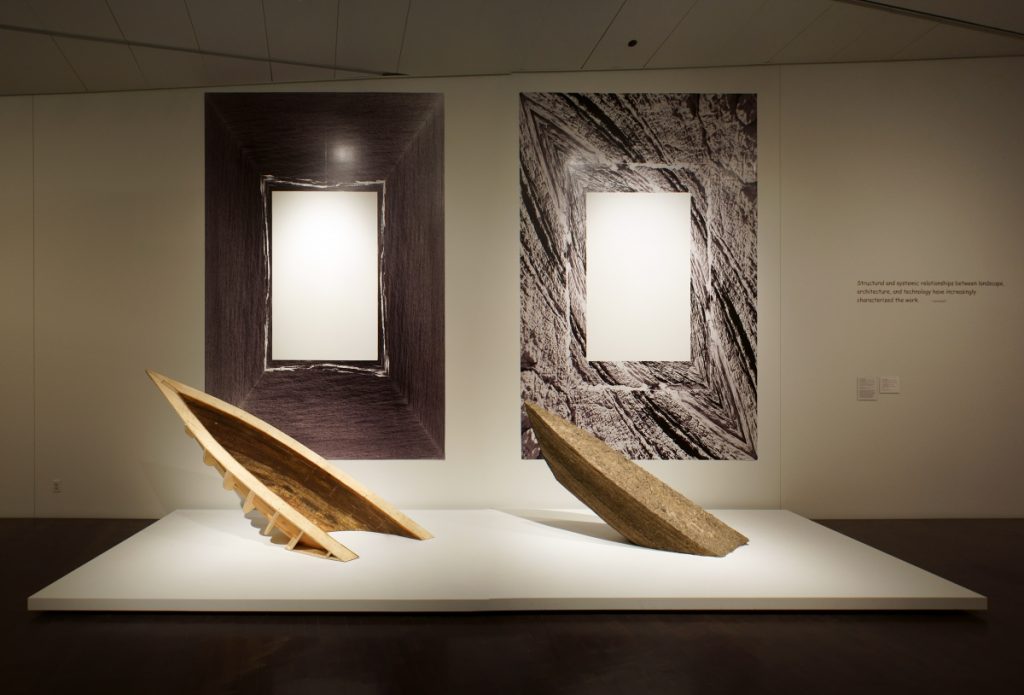
Seascape Structure: Marine Depositional Basin, and Landscape Structure: Marine Sediments, 2011, left:. wood, steel, sediment residue, 66 in., right: compressed chronologically sequential/unconformable Cretaceous Western Interior Seaway associated sediments, steel, amendments, 60 in. 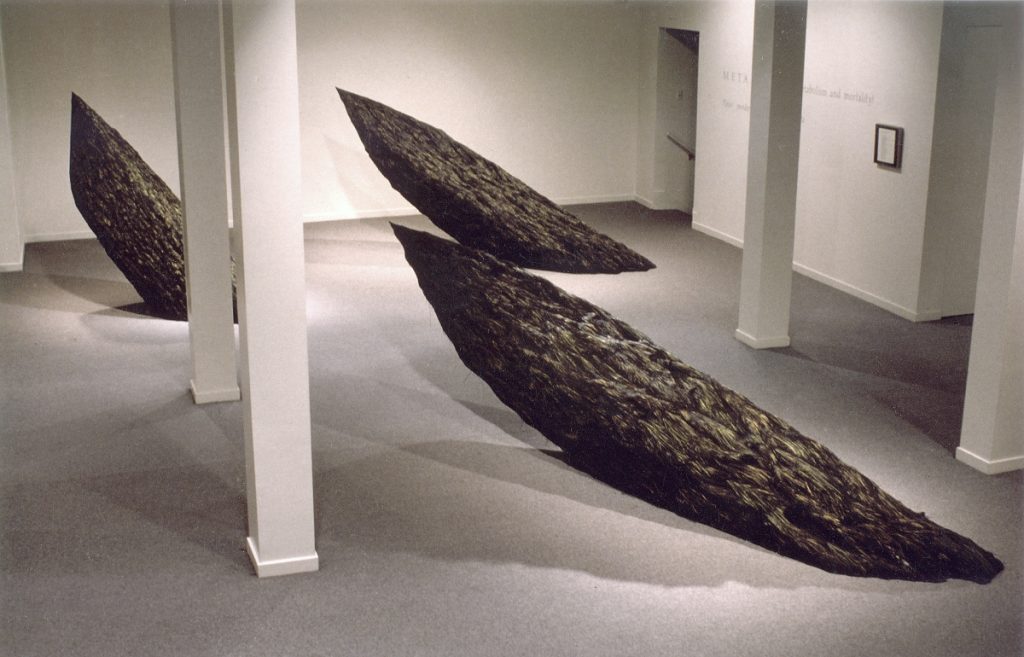
Metafossil (Pinus: ponderosa, radiata, balfouriana), 1992, steel, refractory cement, species specific pine boughs, 7 ft., 10 ft., 12 ft. 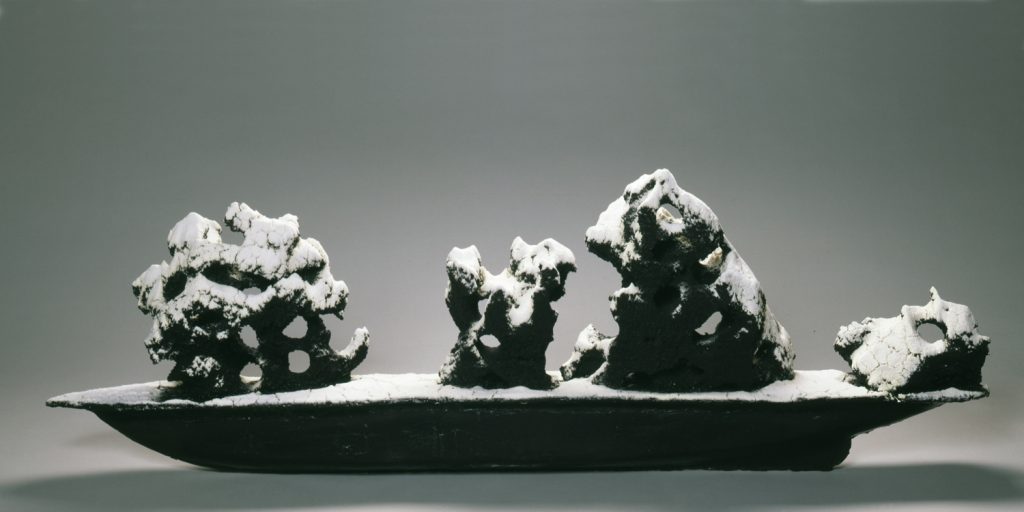
Night Ship/Dark Current/Lava Caves, 1986, ceramic, englobe, pumice, fused silica, 50 in. 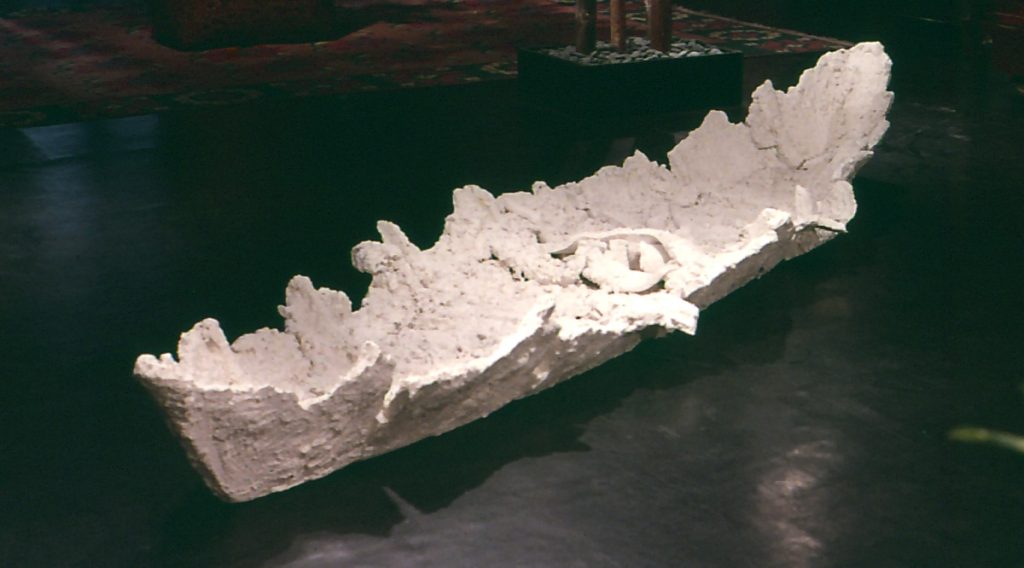
Untitled (Rowboat), 1977, porcelain bisque, perlite, 14 ft. 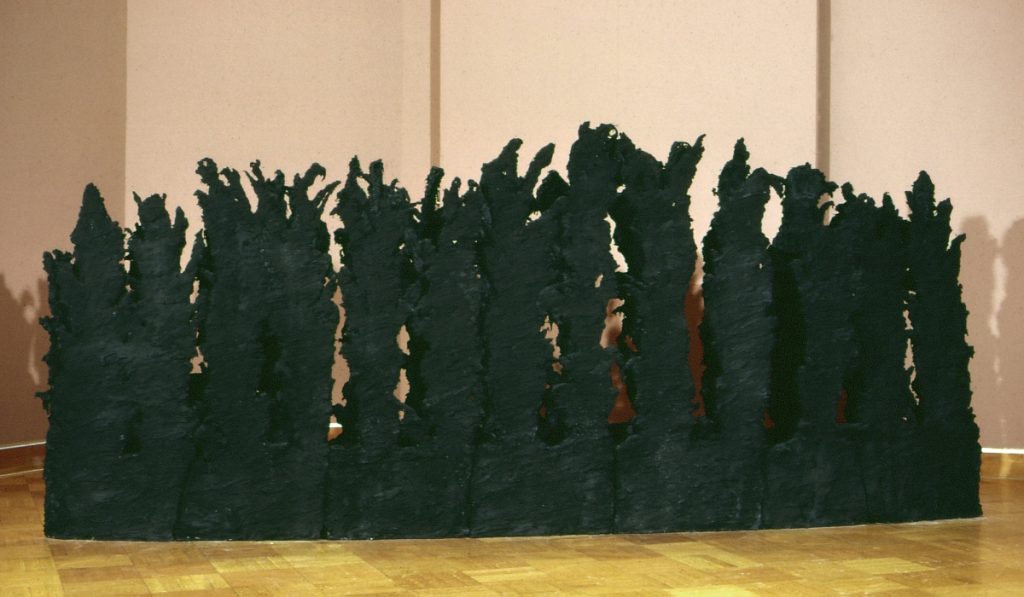
Untitled (Encased Piece), 1979, unfired clay, palm fonds, black cement, 6 ft.-6 in. x 14 ft. 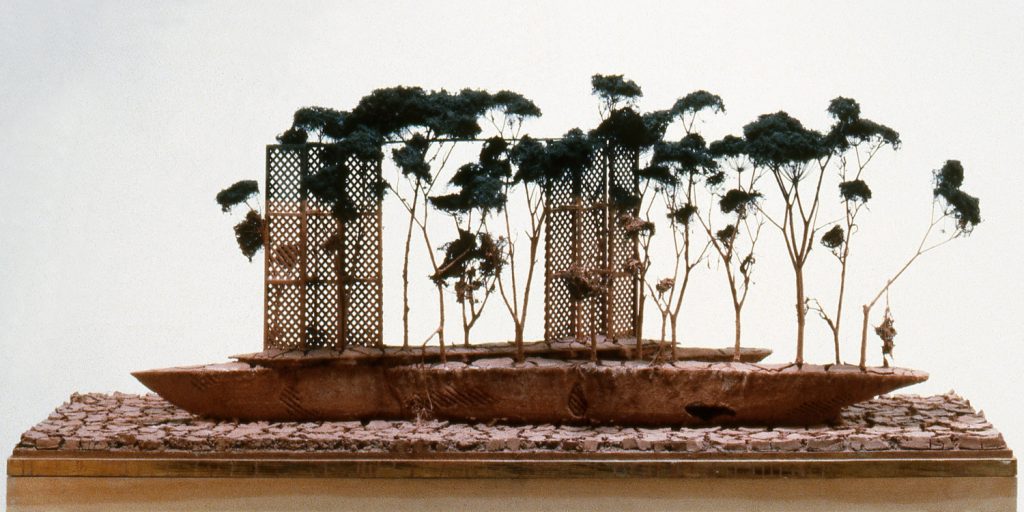
Flood Zone/Submerged Collision (Stage Ship/Forest Ship), 1983, ceramic, wood, stabilized mud, moss, paint, 24 in. x 72 in. 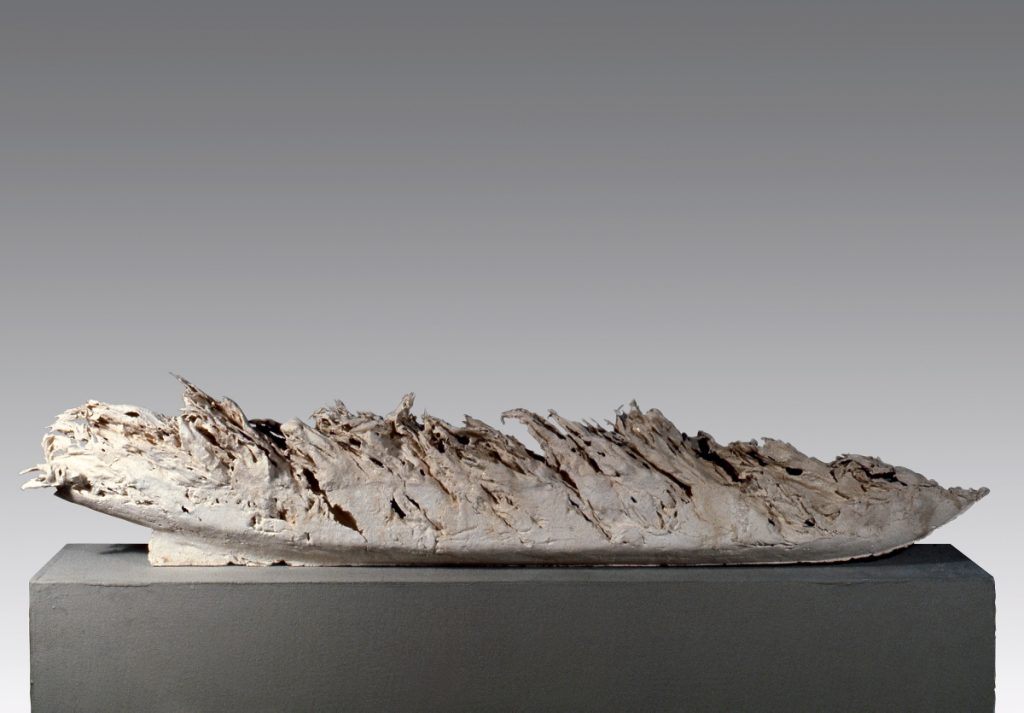
Ship No. 40 (Husk Ship), 1975, porcelain bisque, 50 in. 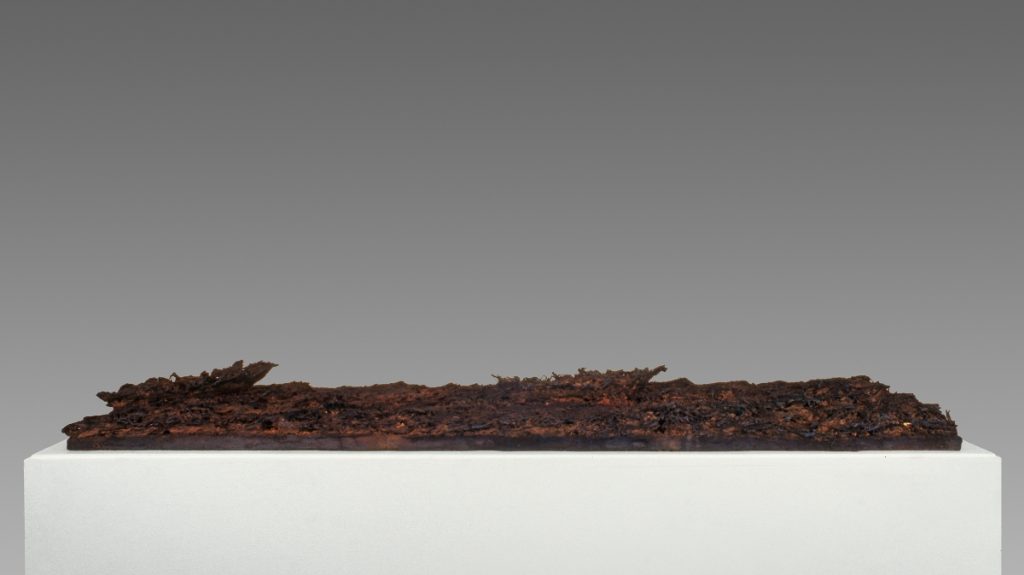
Dutch Piece, 1976, ceramic, potassium permanganate, 48 in. 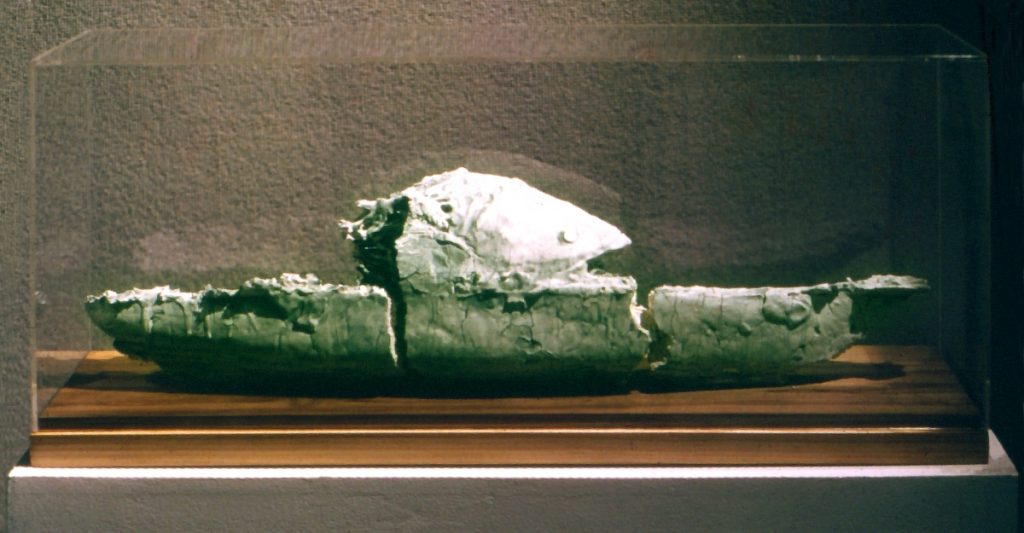
Exile Series No. 10, 1975, porcelain bisque, stains, vitrine, 12 in. x 36 in. w. 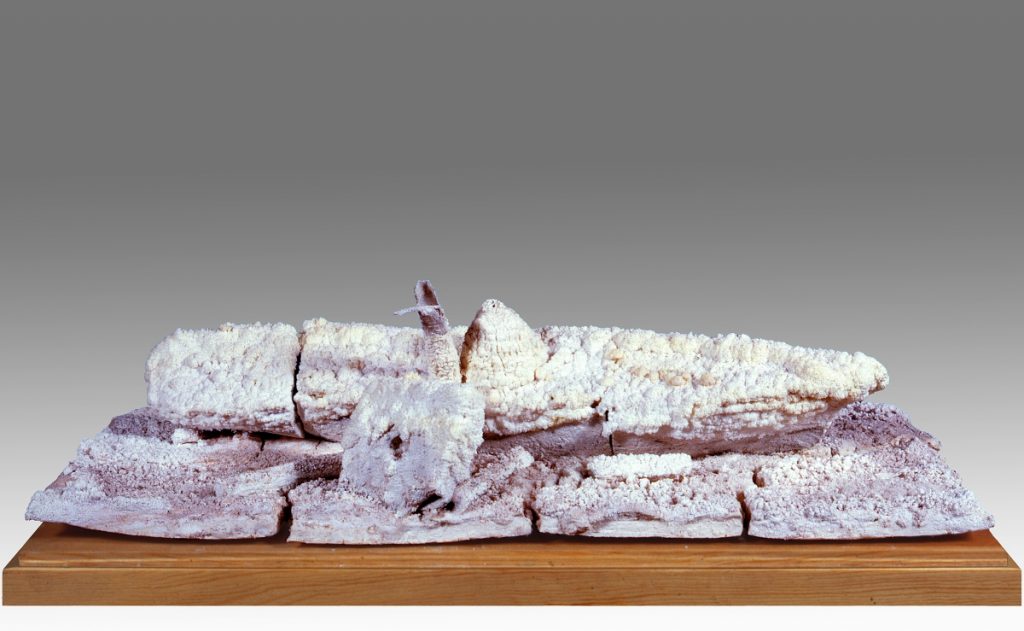
Evaporite Ship, 1972, ceramic, evaporated minerals, 18 in.
John Roloff: Selected Ships, 1972-2019
The ship as a metaphor of change, transit and process, from the late 1960’s to the present, has been an important image in an expanded ceramic context for experimentation and visualization of ideas. The earliest ships as ceramic tableaus and discrete forms represented themselves in narratives of land, sea and transformation. From geologic studies, the ship in and of the landscape became an instrumental concept in the development of my ideas of expanded ceramics. Narrative interests of the ships ranged from the plate-tectonic formation of western North America to experiments in fossilization processes, where the firing of ceramic/organic ship assemblages compressed geologic time into human time, to naval architecture to romantic ideas from landscape and seascape painting as well as literature. Other land/sea processes such as flooding, migration of solutes, sedimentation and lava flows were merged experimentally and metaphorically with the ship form, their tableau environments and increasing scale. Many of the environmental firings of the Land Kiln works from 1979-1992 and subsequent large-scale works incorporated ship images. The larger works have and continue to coevole with ship objects exploring such narratives such as: global metabolism, paleo-climates, site-specific histories and materials.


